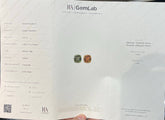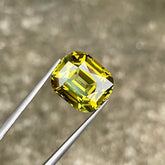The Healing Crystals for Weather Sensitivity
Discover how healing crystals may offer relief for weather sensitivity symptoms. Explore the potential causes of weather sensitivity and the healing properties of crystals in this in-depth article.
The Healing Crystals for Weather Sensitivity
Weather sensitivity, also known as meteoropathy or environmental sensitivity, refers to a condition in which individuals experience physical and emotional discomfort in response to changes in weather patterns. While not officially recognized as a medical condition, many people report experiencing symptoms such as headaches, joint pain, fatigue, mood swings, and even depression or anxiety when the weather shifts. Although the exact cause of weather sensitivity remains unclear, some individuals find relief in alternative therapies, including the use of healing crystals.
In this article, we will explore the concept of weather sensitivity, its potential causes, and how healing crystals are believed to offer relief and support to those who experience this condition.

Understanding Weather Sensitivity
Weather sensitivity is a complex and often misunderstood phenomenon. It is not a standalone medical diagnosis, but rather a collection of symptoms that individuals attribute to changes in weather conditions. These symptoms can vary widely from person to person and may include:
- Headaches and migraines
- Joint pain and stiffness
- Fatigue and lethargy
- Mood swings and irritability
- Sleep disturbances
- Changes in blood pressure
- Increased anxiety or depression
For some individuals, these symptoms are more pronounced during specific weather events, such as thunderstorms, cold fronts, or high humidity. Others may experience discomfort during seasonal transitions, like the shift from winter to spring or summer to fall. While scientific research on weather sensitivity is limited, anecdotal evidence suggests that it can significantly impact a person's quality of life.
Potential Causes of Weather Sensitivity
The exact cause of weather sensitivity remains a topic of debate among scientists and healthcare professionals. Several theories have been proposed to explain why some individuals are more prone to experiencing symptoms in response to weather changes:
-
Barometric Pressure: One prevalent theory suggests that changes in barometric pressure, which occur with shifting weather patterns, may affect the body's internal pressure and cause discomfort for some individuals. Barometric pressure refers to the weight of the atmosphere at a given location and time.
-
Temperature and Humidity: Extreme temperatures and high humidity levels can also trigger symptoms in sensitive individuals. Temperature fluctuations may lead to inflammation in the joints and muscles, while humidity can affect respiratory conditions.
-
Electromagnetic Changes: Some proponents of alternative medicine believe that electromagnetic changes associated with weather shifts can impact the body's energy fields and trigger symptoms. However, this theory lacks substantial scientific evidence.
-
Psychological Factors: Weather sensitivity may also have psychological components. People who dread certain weather conditions or associate them with negative experiences may be more likely to report symptoms.
It's important to note that while these theories are widely discussed, none of them have been definitively proven to explain the phenomenon of weather sensitivity. Consequently, treatment options tend to focus on symptom management rather than addressing the root cause.

Healing Crystals and Weather Sensitivity
Healing crystals, also known as gemstones or crystal therapy, have been used for centuries in various cultures to promote physical, emotional, and spiritual well-being. Proponents of crystal healing believe that these gemstones possess unique energies and properties that can interact with the body's energy fields to promote healing and balance. While scientific evidence supporting these claims is limited, many individuals have reported positive experiences with crystal therapy, including relief from weather sensitivity symptoms.
Here are some healing crystals that are commonly associated with providing support to those experiencing weather sensitivity:
-
Amethyst: Amethyst is known for its calming and soothing properties. It is often used to alleviate stress, anxiety, and mood swings—symptoms commonly associated with weather sensitivity. Some people believe that amethyst can help individuals stay grounded during weather-related discomfort.
-
Lepidolite: Lepidolite is a stone associated with emotional balance and stability. It is thought to help alleviate symptoms of anxiety and depression, which may be exacerbated by weather sensitivity.
-
Moonstone: Moonstone is believed to be connected to the energy of the moon and is associated with intuition and emotional healing. It is often used to promote a sense of calm and balance during emotional fluctuations.
-
Hematite: Hematite is known for its grounding properties and is believed to help stabilize energy fields. It is often used to alleviate physical discomfort, including joint pain and headaches, which are common symptoms of weather sensitivity.
-
Clear Quartz: Clear quartz is considered a versatile healing crystal that can amplify the energy of other stones. It is often used in conjunction with other crystals to enhance their effects and promote overall well-being.
-
Selenite: Selenite is believed to have purifying and cleansing properties. It is often used to clear negative energies and promote a sense of clarity and focus.
-
Citrine: Citrine is associated with positivity and abundance. It is used to boost mood and alleviate feelings of lethargy or depression that may be exacerbated by weather sensitivity.
How to Use Healing Crystals for Weather Sensitivity
If you're interested in exploring the use of healing crystals to manage weather sensitivity symptoms, here are some steps to get started:
-
Choose the Right Crystals: Select crystals that resonate with you and address the specific symptoms you experience. You can consult with a crystal healer or use your intuition to choose the right stones.
-
Cleansing and Charging: Before using your crystals, it's essential to cleanse and charge them. This can be done by placing them in sunlight, moonlight, or saltwater, or by using other purification methods.
-
Wear or Carry Crystals: You can wear crystals as jewelry, carry them in your pocket or purse, or place them in your environment where you spend the most time.
-
Meditation and Visualization: Meditate with your chosen crystals by holding them in your hand or placing them on your body. Visualize the energy of the crystals bringing balance and relief to your body and mind.
-
Affirmations: Create positive affirmations related to your weather sensitivity symptoms and repeat them while holding your crystals. For example, "I am grounded and at ease, even during weather changes."
-
Keep a Journal: Record your experiences and any changes in symptoms or well-being while using healing crystals. This can help you track their effectiveness over time.
-
Consult a Professional: While healing crystals can be a complementary approach to managing weather sensitivity, it's essential to consult with a healthcare professional for a comprehensive assessment and to explore conventional treatment options if needed.
Weather sensitivity can be a challenging condition to manage, as its causes remain unclear, and conventional medical treatments are limited. While healing crystals are not a replacement for medical care, many individuals have found them to be a valuable complementary tool for alleviating symptoms associated with weather sensitivity.

The use of healing crystals is deeply rooted in spirituality and alternative healing practices, and its effectiveness varies from person to person. If you decide to explore crystal therapy, approach it with an open mind and a willingness to experiment to determine what works best for you. Whether you believe in the metaphysical properties of crystals or simply find comfort in their presence, they can serve as a source of support and solace in your journey to manage weather sensitivity. As with any holistic approach, it's essential to combine it with professional medical advice and treatment when necessary for a well-rounded approach to health and well-being.
Final Words
In conclusion, weather sensitivity remains a mysterious and often challenging condition for those who experience its symptoms. While the scientific understanding of its causes is still evolving, individuals who suffer from weather sensitivity are often left searching for ways to alleviate their discomfort. Healing crystals, with their long history in alternative medicine and spirituality, offer one potential avenue for relief.
It's important to approach the use of healing crystals with an open mind and a healthy dose of skepticism, recognizing that their effects can vary widely from person to person. While there may not be robust scientific evidence to support their efficacy, many people report positive experiences and a sense of well-being when using crystals.

Whether you choose to incorporate healing crystals into your wellness routine or explore other holistic approaches, such as meditation, mindfulness, or dietary changes, it's crucial to consult with healthcare professionals for a comprehensive assessment of your symptoms. Weather sensitivity may have underlying medical causes that require conventional treatment.
Ultimately, the journey to manage weather sensitivity is a highly individual one. Healing crystals, if used thoughtfully and in conjunction with medical guidance, can be a source of comfort and support for those seeking relief from the physical and emotional symptoms associated with changes in weather patterns. As we continue to learn more about this complex phenomenon, individuals are encouraged to explore various approaches to find what works best for them, always prioritizing their overall health and well-being.
Image Source: Google Images















